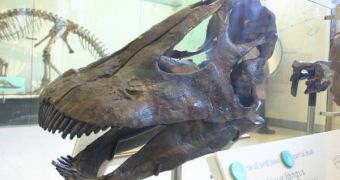New measurements and estimates of how dinosaurs looked like show that the largest animals in history may have not been as large as researchers first made them to be. Biologists from the George Mason University, in Virginia, led by Geoffrey Birchard, devised a new equation of calculating dinosaurs' weight based solely on their skeletons, and found that the international scientific community had been overrating the weight of the giant reptiles since day one. According to their numbers, many species in fact weighed as little as half of their originally estimated weight.
“They were still huge animals, I don’t think anyone would dispute that. They might be half as big, but half of something that's really huge is still really huge,” Birchard explained, quoted by LiveScience. He is also the co-author of a new scientific paper detailing the mathematical equation, published in the latest issue of the Journal of Zoology. The new numbers indicate that Diplodocus, for example, weighed only 4.4 tons (4,000 kg), as opposed to the 6.1 tons (5,500 kg) it has been credited with until now.
Among the other animals that got “downsized,” the researcher mentioned Brachiosaurus, whose size was reduced from 35 tons (32,000 kg) to 18 tons (16,000 kg), Lourinhasaurus alenquerensis, weighing in at only 17 tons (15,000 kg) from its original 32 tons (29,000 kg), as well as Styracosaurus albertensis, which apparently only weighed 3.6 tons (3,300 kg), not 4.6 tons (4,200 kg). Birchard and his collaborators, Gary Packard and Thomas Boardman, both from the Colorado State University, said that the old equation was wrong because, when applied to living animal skeletons (in this case elephants), it drastically overestimated their mass.
So, they devised a new model based entirely on the width of the bones. “I like to explain it as a building that's built on pillars. The pillars have to get bigger around to get stronger to support a larger building. Well, the legs of an animal are the same thing, just pillars supporting the body,” Birchard mentioned. “Think about an animal that big – they would have had to have certain amounts of muscle to move their mass. If their mass is lower, the amount of muscle they would have had to have is significantly less. The amount of oxygen they would need could be interpreted to be much less because there's much less tissue to supply with oxygen.”

 14 DAY TRIAL //
14 DAY TRIAL //